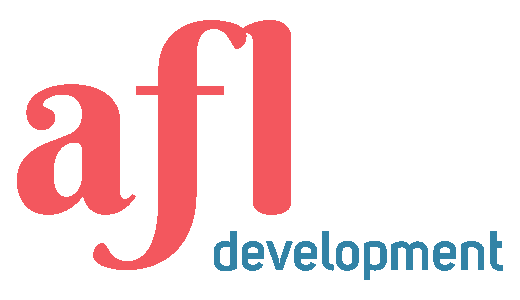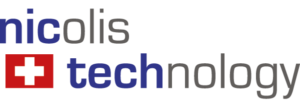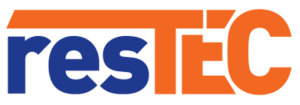Choosing the right domain name for a website
Domain name is more than just a web address. It is brand’s digital identity. A well-chosen domain can improve brand recognition, SEO and user trust, while a poor choice can make your site harder to find or remember.
What is a domain name
A domain name is website’s unique address on the internet (e.g. example.com), consisting of two main parts:
- Second-level Domain (SLD) which is the customizable name you choose (e.g. “google” in google.com).
- Top-level Domain (TLD) or domain extension (e.g. .com, .org or country codes like .de, .uk).
If there is a prefix to domain (e.g. blog.example.com or shop.example.com), that is called a subdomain. Subdomains are often used to organize sections of a website or host separate services under the same domain.
Why domain name matters
Domain name serves as digital storefront, creating an immediate impression that can make or break user trust. In those crucial first seconds when someone encounters website, a clear and memorable name establishes instant credibility, while a complicated one might raise doubts.
Beyond first impressions, domain plays a subtle but important role in search visibility. Although exact keyword matches no longer guarantee SEO dominance, a relevant name that aligns with brand or industry still contributes to discoverability. The best domains are the ones that are short and catchy. Distinctive names not only improve shareability across social platforms and word-of-mouth referrals, they reinforce brand identity with every appearance in browser bars, email signatures and advertisements. Perhaps most importantly, domain choice sends unconscious signals about professionalism. A well-considered web address conveys legitimacy, while a spammy-looking string of numbers or hyphens might discourage potential visitors before they even reach website’s content.
Classical domain extensions
When we think about domain name selection, first thing that usually comes to mind is registering domain with .com, .net or .org domain extension. This is because those extensions have existed since mid 1980s, as a set of “general purpose domains”. That is one of the main reasons why people associate those extensions with trust and stability.
However, dominance of these TLDs comes with challenges. Finding a short, memorable .com domain requires either creative word combinations, significant investment in the aftermarket or accepting longer or hyphenated versions.
New domain extensions
Due to lack of availability of classical TLDs, ICANN (Internet Corporation for Assigned Names and Numbers) announced in 2012 expansion of gTLDs. New domain extensions (like .travel, .dev, .tech, .tv, .io) offer creative options beyond traditional .com or .net.
Pros:
- more availability, which means finding a short, brandable name is easier with newer extensions
- industry relevance: extensions like .travel (for tourism) or .dev (for developers) instantly communicate your niche
- creative branding, meaning unique domains can stand out (e.g. example.travel instead of exampletravel.com).
Cons:
- lower trust, meaning in some cases some users still prefer .com and may question unfamiliar extensions
- SEO, although Google claims new extensions rank equally, some users still might hesitate to click
- limited recognition, meaning not all extensions are widely understood (e.g. .io is popular with tech startups but may confuse non-tech audiences)
Global vs country-specific domains
Apart from global domain extensions like .com or .org, there are country-specific extensions that let local business have short and unique domains.
Global domains (.com, .net, .org, etc.)
✔ Best for: international brands, startups, SaaS companies and businesses targeting a worldwide audience
✔ Pros: recognizable, versatile and trusted globally
✔ Cons: harder to find good .com names and they may not signal local relevance
Country-specific domains (.uk, .de, .ca, .au, etc.)
✔ Best for: local businesses, regional services or SEO targeting a specific country.
✔ Pros: boosts local SEO, builds trust with local customers and may improve click-through rates in search results
✔ Cons: limited global appeal, which may require separate domains for different regions or countries
Country domains used globally (.me, .co, .ai, .tv, etc.)
Some country-code domains have gained worldwide popularity for branding:
.me (Montenegro) – often used for personal brands, portfolios or blogs (e.g. yourname.me)
.co (Colombia) – marketed as an alternative to .com, popular with startups
.ai (Anguilla) – widely adopted by AI and tech companies
.tv (Tuvalu) – commonly used by media and streaming platforms
These extensions work well if they fit your brand, but be aware that some have higher renewal costs than generic TLDs.
Popular domain extensions and their price comparison
Here’s a breakdown of common domain extensions and their typical price ranges (annual registration):
| Extension | Purpose | Price range | Notes |
|---|---|---|---|
| .com | Global commercial | $10-20 | Most recognized; although premium names cost thousands of dollars |
| .net | Networks/tech | $12-20 | Traditional alternative to .com |
| .org | Organizations | $12-20 | Common for nonprofits |
| .io | Tech startups | $30-60 | Popular with developers; higher renewal costs |
| .dev | Developers | $12-20 | Google-operated; requires HTTPS |
| .ai | AI companies | $60-100 | Anguilla’s ccTLD; premium for tech |
| .co | Companies | $20-30 | Marketed as “.com alternative” |
| .tv | Media/streaming | $30-50 | Popular with content creators |
| .me | Personal brands | $20-40 | Great for portfolios/resumes |
| .blog | Bloggers | $20-30 | Niche for content creators |
| .store | E-commerce | $20-40 | Direct shopping association |
| .app | Applications | $15-25 | Requires HTTPS security |
| .xyz | General use | $5-15 | Budget option; some spam association |
| .ca (Canada) | Local Canadian | $15-25 | Requires Canadian presence |
| .de (Germany) | Local German | $10-20 | Popular in EU markets |
| .uk (UK) | Local British | $10-15 | Requires UK presence |
What are premium domains?
Premium domains are highly sought-after domain names that are typically short (even one-letter domains like x.com), brandable or contain valuable keywords (e.g. cars.com, invest.ai, shop.store, hotels.com). Unlike regular domains, which have standard registration fees (usually $10-50/year), premium domains are often sold at much higher prices, sometimes hundreds to millions of dollars due to their perceived market value. Premium domains are especially valuable in competitive industries where a strong online presence is crucial.
Some of the reasons why these domains have high prices are:
- direct traffic: users type them naturally (e.g. “insurance.com”)
- SEO advantage: keyword-rich names rank faster (e.g. “loans.com”)
- brand protection: companies buy them to prevent competitors from using them
If a premium domain is out of budget, companies (especially startups) might consider using brandable names, new domain extensions, hyphenated versions, domains with slight word modification etc.
Premium domains vs. regular domains
| Feature | Premium domains | Regular domains |
|---|---|---|
| Price | $100-1M+ (one-time purchase or high annual fee) | $5-50/year (standard registration) |
| Availability | Rare, often already registered & resold | Widely available (if not taken) |
| Length | Short, usually 1-2 words or even as short as 3-6 letters | Varies (often longer) |
| Brandability | Highly memorable, keyword-rich | Depends on creativity |
| SEO impact | May have historical backlinks (if previously used) | Starts fresh |
| Purchase process | Sold via auctions or private brokers | Direct registration |
Premium domains give instant credibility, which means a premium name like lawyer.com or realestate.com conveys authority and trust. Since it’s easy to remember and contains keyword, users might just type the domain directly, which reduces ad costs. At some point, some premium domains become even more popular, which means their resale value grows.
The main reason why the company might want to stick with regular domain is the budget limitation. Startups may prefer affordable alternatives compared to buying premium domains. This might include either creative branding or using some clever word combinations.
Budget considerations when choosing a domain
- First-year Deals – many registrars offer low introductory prices (sometimes $1-3), but check renewal rates
- Premium domains – short, valuable names often cost 100s or even 100,000s of dollars regardless of extension
- Renewal costs – some extensions (like .io) have much higher renewal than first-year prices
- Bundled services – some registrars include free WHOIS privacy or email with certain extensions
Key takeaways for choosing a domain
1. Prioritize memorability
- keep it under 15 characters
- avoid numbers (unless they are part of the brand)
- avoid hyphens
- ensure easy spelling
2. Align with company/brand strategy
Consider the audience. If the company has global ambitions, you should secure both .com and local variants. If the focus is just on local markets, company should prioritize country TLDs.
3. Think long-term
- consider renewal costs
- avoid trends that may date your brand
- choose a name that grows with your business
- secure similar variants
4. Check trademark conflicts
Ensure your domain doesn’t infringe on existing brands.









